How to Create Comforting Art
This blog post is for you who want to spread more joy through your art, and make your art more comforting and captivating.

I am listening to an interesting course on writing. It’s Neil Gaiman Teaches the Art of Storytelling. Writing and making a picture have a lot in common. When you look at your piece, can you find a story – so, a conflict and a solution?
Conflict Creates More Comfort
Neil Gaiman says that beginning writers leave conflict out of their stories. And that it’s the conflict that makes the story interesting. The same goes for the picture. Beginner artists usually want to use only happy colors and draw or paint only beautiful and joyful things.
I too want to make comforting art – something that takes me to a softer world right in the beginning and that will lift the viewer’s mind when finished. But the conflict must still be allowed because first showing it, and then finding a solution for it, creates comfort and happiness.
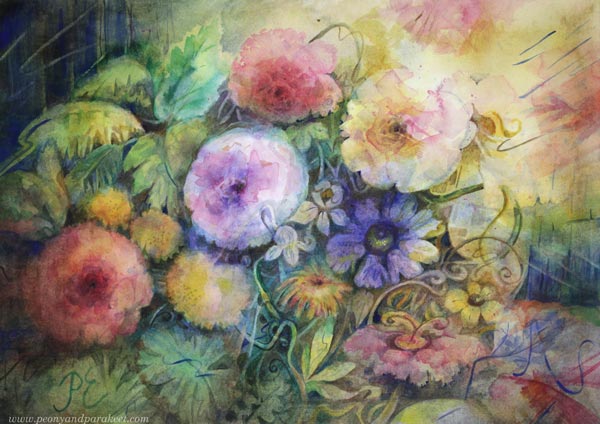
Purchase this painting via the Taiko art store!
For example, in this watercolor painting above, the flowers have run indoors because it has started to get windy and rain a little.
Imagine how they first evaluate the houses: “Where would we be welcomed the most?” And then they would push through the darkest window and settle on the windowsill close to each other.
Imagine stepping into that room and seeing shattered glass and feeling unpleasant coldness. But then the colorful flowers would bend towards you. What a pleasant surprise to receive in these windy times!

When I painted this, I wanted to protect myself from the winds of the world. I started with the flowers, but the painting only came true when the wind joined in.
Overcoming Difficulties Brings Comfort
For me, the most comforting art is the one where difficulties are overcome. For example, in this painting, the flowers have experienced loss, but are still ready to take risks again.

Build Different Characters
Neil Gaiman says that his stories are largely in the hands of the characters. Also in painting, you have to identify the main characters. Blots easily turn into flowers, but don’t leave it at that! Make small changes to the shapes so that the personality of each flower comes out. Often it’s a very small adjustment that a beginner easily ignores as insignificant. The skill of building an expression for a form no matter what it represents develops with making.
Strong characters and an understanding of the place where everything happens create a story in the picture. My main characters are strong-minded and independent and the conflict is often a fight against wild conditions.
For example, winter has arrived here, but the flowers stubbornly decide to turn the clock back to a warmer time. In this conflict, the flowers lose their color to stay alive.
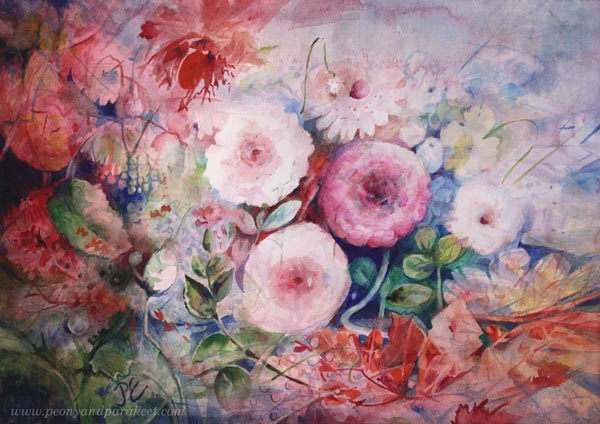
Sometimes what feels good at first can break down in the long run. Can a flower live only in light? Don’t we get a better understanding of our outlines and boundaries in the shadows?

On the other hand, when life has been nothing but darkness and the colors have faded, the power of light enables a fast recovery.

Observe the Surroundings with Empathy and Imagination
As a director of disaster films, I am inspired by the survivors around me. This autumn, I listened to the lily of our new pond, who described how boldly she would soon bloom. Fall progressed and my suspicion grew. But just before the big storm, the bud opened for one day.
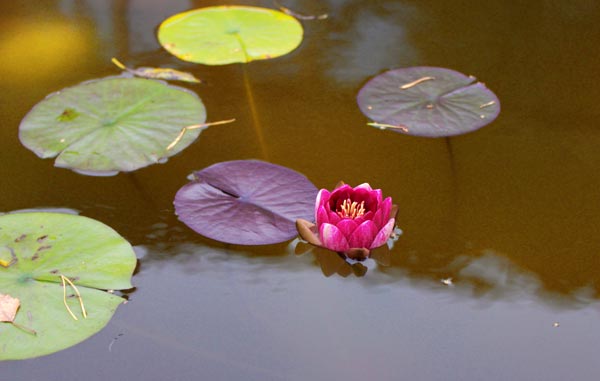
You can survive of the deep waters – even only for a moment!

The world of inanimate objects is also full of ideas when you use your imagination.
For example, wallpaper is one of the most pathetic things I know. The flowers are glued in place, but they still see and hear everything. If they were released, a lot of pent-up energy would be present. The silent and motionless wall flowers would party around the room. They had been thirsty for life for a long time.

Isn’t that what happens when a person starts creating art? The frenzy inside her finally gets out!
Romantic Watercolor Florals
This week is about red, pink, sugar, and cream – so, romantic watercolor florals!

I had a break from watercolor painting for a long time, but in the summer I started again.
Romantic Flowers and Chicklit
In summer, I had all kinds of complicated ideas for a new course, but my inner voice said:
- – What if we take out the watercolors and do something that hasn’t been done in a long time?
– Can I be a romantic?” my artist-me asked my educator-me.
– You can be as romantic as you want, as long as you work systematically and understandably, she said.
When the camera turned on, a short “Yippee!” went up inside me. Freely Grown was born, but watercolor painting didn’t stop there. I had been dreaming for a long time that I could do something lighter – like the writer Rachael Herron, who wanted to start her career with a profound book, but ended up writing a chick-lit novel. He noticed that chick lit is surprisingly challenging and realized that every genre of literature has its own difficulties.

Watercolor Flowers like Sweet Desserts
I’ve learned a lot of painting techniques with watercolors in the past and it can certainly be seen in my oil paintings. But in the summer I started to be interested in what I had learned while painting with oils and whether I could do vice versa – so, use it in watercolors.
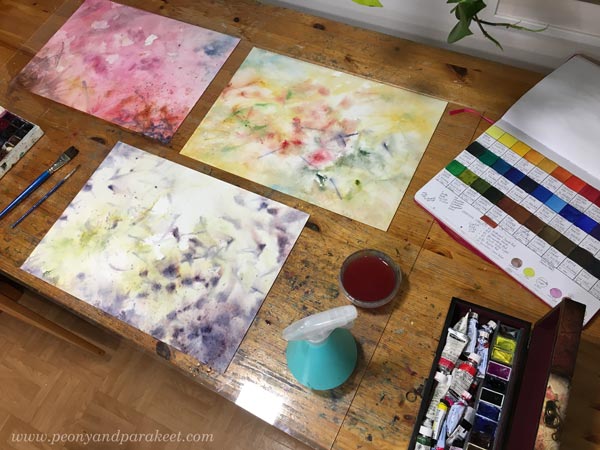
Now I didn’t want to do anything hugely abstract, but sweet flowery paintings. The kind that, if they were food, would have a lot of sugar and whipped cream in them.

An artist should probably only do fine dining, but this has started to resonate with me and it has also been nice to notice that there is a demand for it.
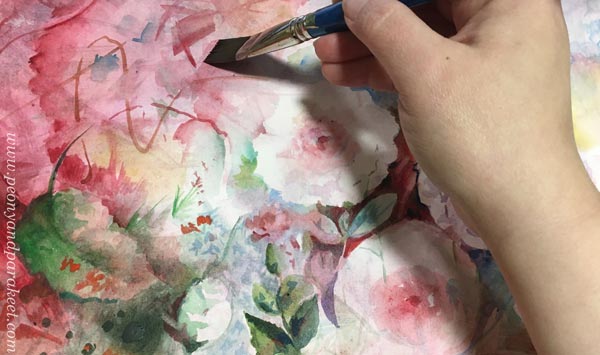
Even now, I’m making a small series for a gallery.
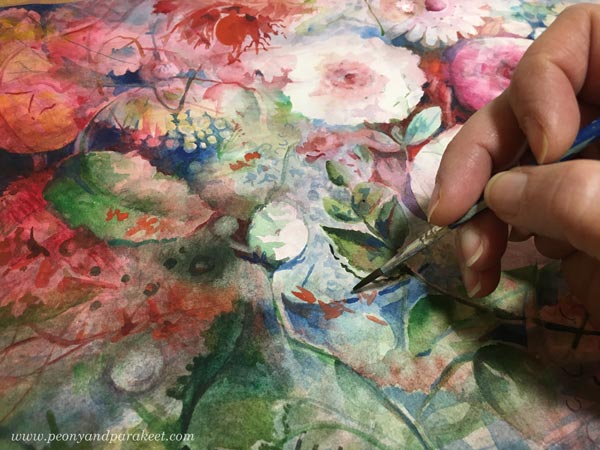
Those Who Won Winter
This red-hued Talven voittaneet is the first for the series of four. The name would be translated into English as “Winners of Winter” but it is not quite the same. The Finnish version is closer to the expression “those who won winter.”

My favorite part of this painting is unexpectedly the bottom right. I often leave the edges pretty undefined, but here the bottom part plays a key role. It has melting ice from which the flowers rise.

Imagine flowers winning the winter with their warmth – isn’t it such a lovely thought! I have really enjoyed making these kinds of romantic watercolor florals.
Flowers and Gala
This week has been busy. I already received a grant from the city of Vantaa in the summer for my early autumn art exhibition, but it was celebrated only last Wednesday when the city organized a cultural gala.

It was nice to be surrounded by respected colleagues. In the picture, a councilor Lasse Norres representing the city congratulates the visual artists. Päivi Allonen and Satu Laurel also received a grant and are there on the stage with me. They have wonderful paintings and I highly respect them both.
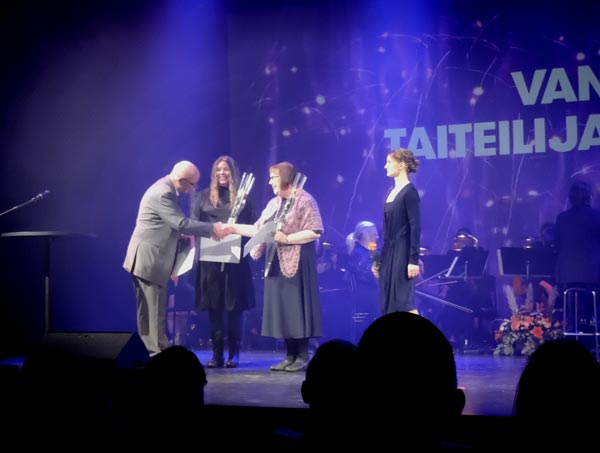
Have I mentioned that I love flowers? I think if you’ve been following me for even a little while you know that!
Romantic Watercolor Florals
At the moment, my small studio is a flower painter’s heaven and the flowers have free access there, even if I don’t use them directly as models. The flowers of my inner world may resemble the flowers of the outer world, but they have their own romantic life.
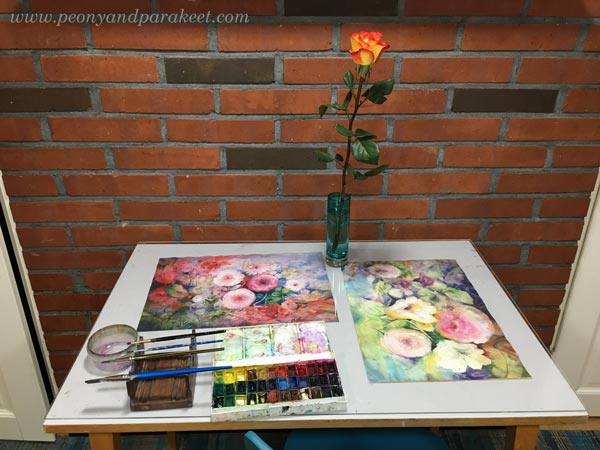
Nice creative moments for your weekend!
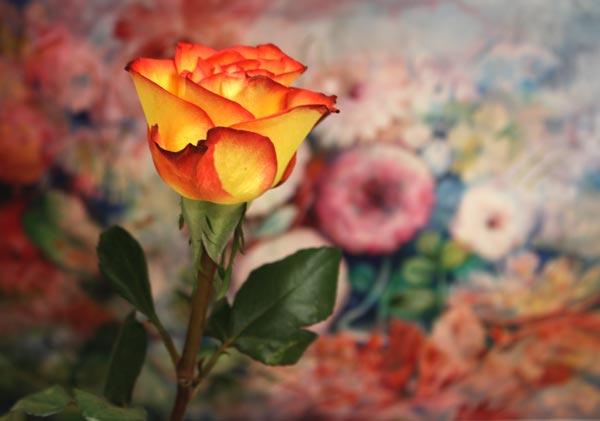
Watercolor Flowers in Louisa M. Alcott Style
This week, I talk about Louisa M. Alcott’s characters and painting flowers in watercolor.

They say that nature should not be humanized, but when I paint flowers, I do that without hesitation.
Splashes Start an Adventure
I love getting to know my flowers little by little. Their life begins with random splashes and I try to grow them as freely as I can.
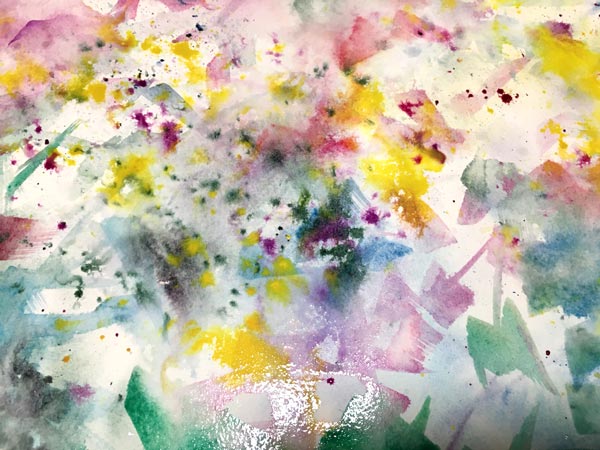
At its best, a painting is like a good book that hooks you into the atmosphere and cannot be left unfinished. It’s always exciting to see what kind of characters turn out on paper and what happens to them.
Little Women by Louisa M. Alcott
In this painting, the big peony was born first. She is a girl who is sure of her position, but always ready to hug and strengthen others as well. I was reminded of the novel Little Women by Louisa M. Alcott. Could that peony be like Meg, the big sister of the family?

And could there be Amy next to her, a growing beauty and sometimes a bit self-centric too?
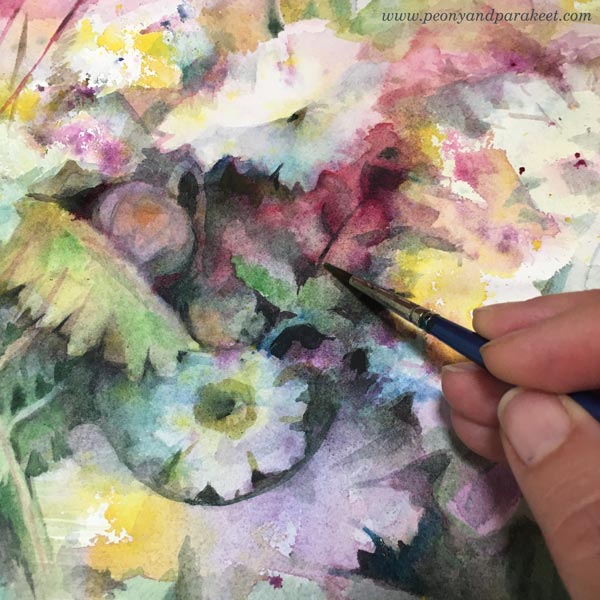
Right below white and glamorous Amy, there’s sweetly round Beth who left this world far too soon.
Painting the Atmosphere
When the watercolor wets the thick cotton paper, I would like to invite you to my little studio and give you a thin brush. Together, we would then paint small shapes like writers working on a common story.

However, as everything in flowers does not have to be literal or recognizable, we could just focus on the atmosphere.
Jo the Tulip
The key figure in my painting is the tulip in the background. He is like Jo, unique and more modern than others, ready to create her life joyfully, but without being forced to the center of the painting. I admired Jo as a child, and it has taken me a long time to dare to be like her – step aside and do my own thing.

Somehow I also think that when you come to my course, you too want to be like Jo – do your own thing, express the flavor of life, embrace the abundance of nature, and allow unapologetic playfulness.
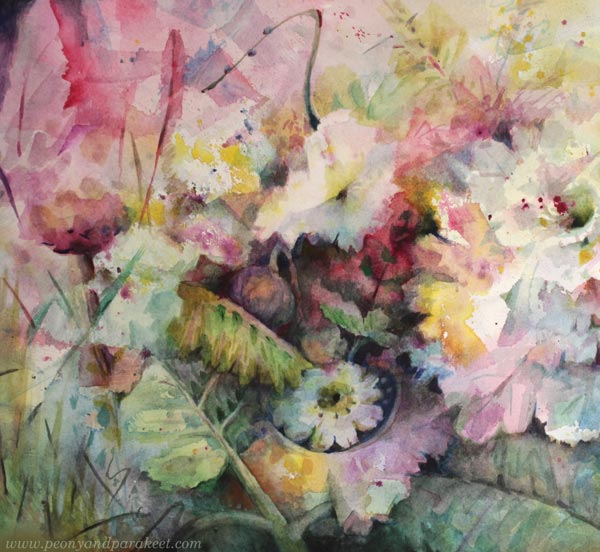
Freely Grown – Sign Up Now!
The course Freely Grown starts next week. I can hardly wait for it to start – join me!
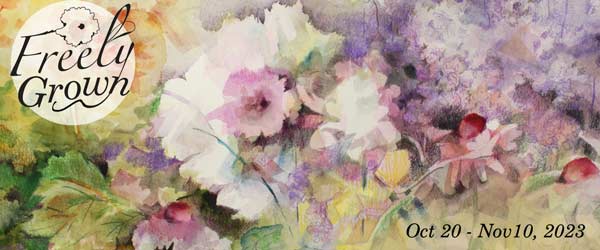
Freely Grown >> Sign up here!
Art and Familiar Things – Inspiration from Sounds and Surroundings
This week is about getting inspiration from familiar things like songs and the sounds of the surroundings.
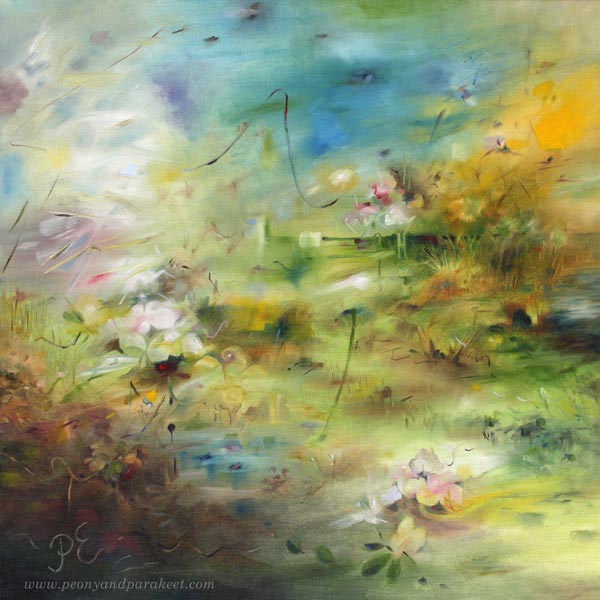
I live in an area built in the 1960s. I love the mid-century modern tile houses and their old-fashioned gardens with apple trees and bush hydrangeas. One year, at the end of May, apple trees were blooming like crazy, and when I took the dogs for a walk on a sunny afternoon, I heard a family having a graduation celebration, singing beautifully in a choir. I felt I could touch the air and see the melody traveling on it, flying like a swallow, carelessly yet skillfully.
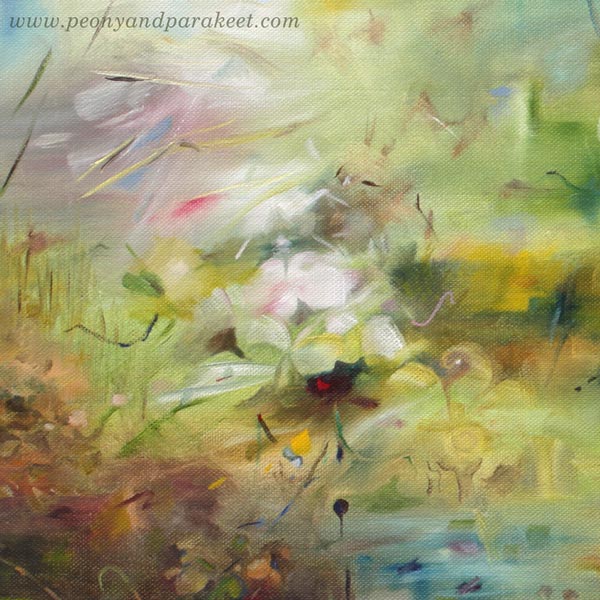
Visualizing Familiar Sounds and Songs
A similar kind of inspiring sight happens when I hear Aretha Franklin singing “Say a Little Prayer.” In the chorus, the choir sings the melody, and Aretha just throws in some sounds. It’s like she is the background singer there, except she’s not. The timing of the single notes is perfect, and their sound is powerful. I see her singing as lines that are effortless without being worthless, ornamental without being traditional.
See this post from 2014 for tips for using music as inspiration: 5 Ways Music Can Improve Your Art
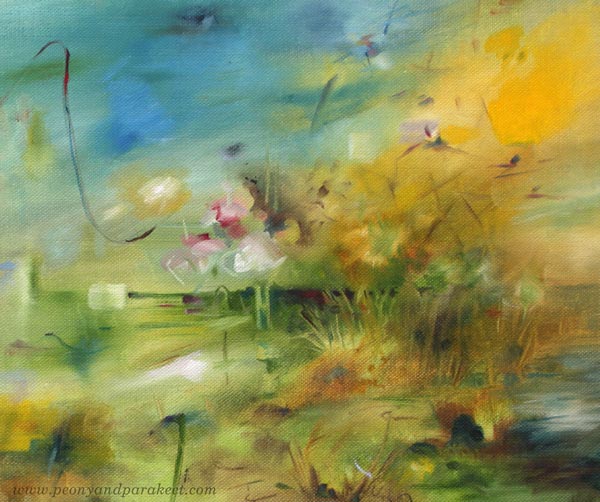
When an old house is demolished, and that happens too much nowadays, they destroy the garden too. I see this constantly happening in our area, and it’s heartbreaking. I don’t look at the surroundings like a property developer but as an artist who seeks visual music. I want to see the old-fashioned songs: lines that are born when birds fly over the scenery, curves that butterflies make on the flowery fields, shadows that scream, and sunspots that quietly fade away. All that sound and movement creates music that inspires me to paint!
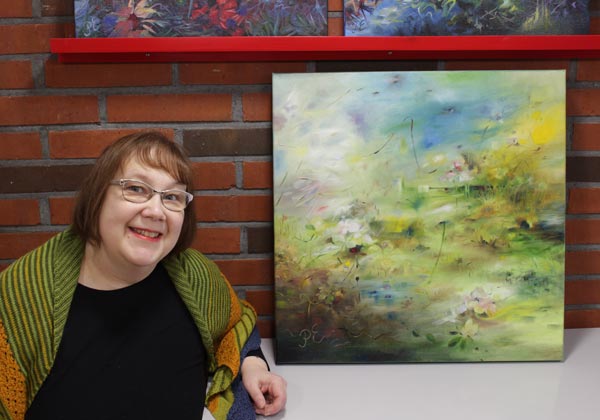
Northern Splendor – Seeing Familiar Things as a Fantasy
Usually, I have gone on an adventure to faraway unknown regions when painting, but in this series that I am working on, I’m in Finland, where gardens and nature alternate. I paint the light of northern summers and connect that with architectural ornaments.

In this painting, I imagined how a French couple from the 19th century visited Finland.
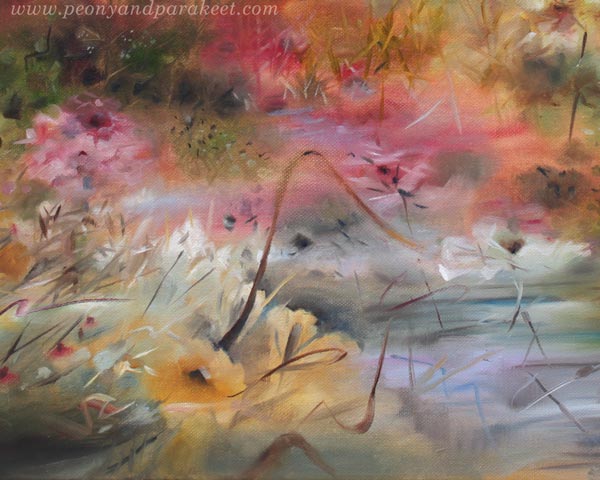
They then saw how the palaces and churches of Central Europe do exist in Finland too, but all this splendor is in nature instead of buildings.
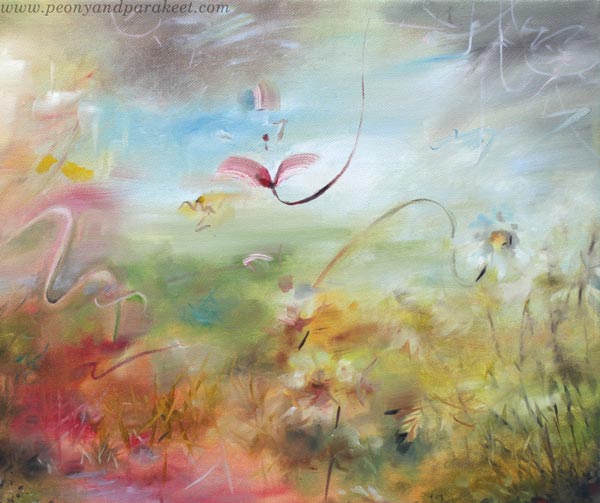
My dream is to paint like Aretha sang – like it would all be careless strokes, yet so intentional and so creatively put that they break the surface of what’s ordinary and familiar.
Read That, Watched That, But Can It be Renewed?
I am currently working on a painting for a group exhibition. My theme is Alice in Wonderland!
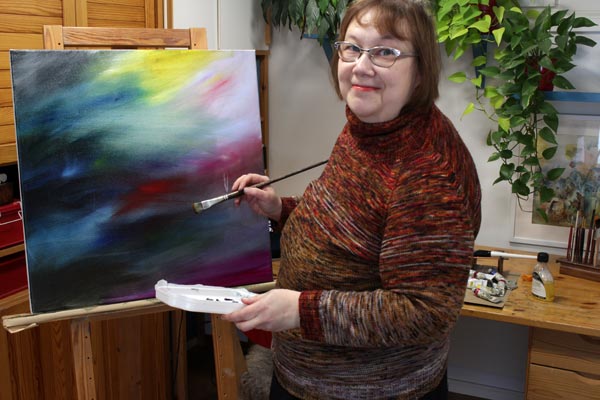
It’s a tale that has been heard so many times. How to break through it? Exciting!
What familiar things inspire you?